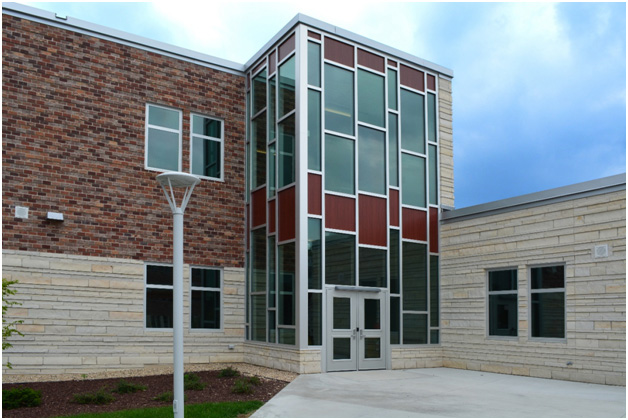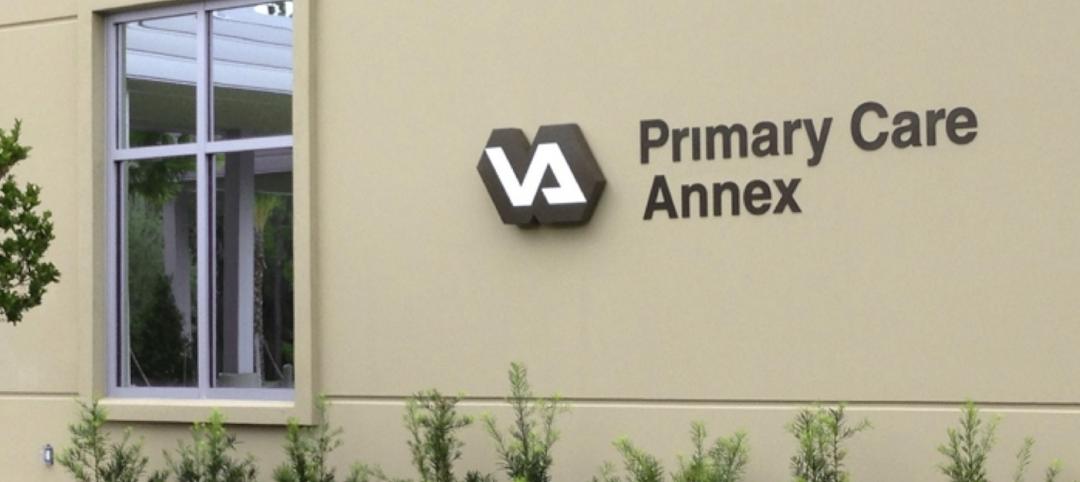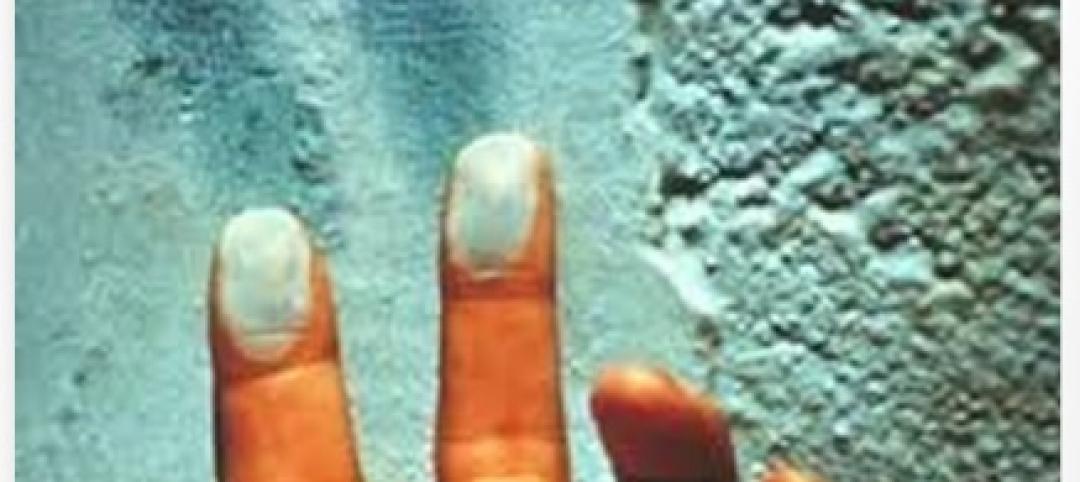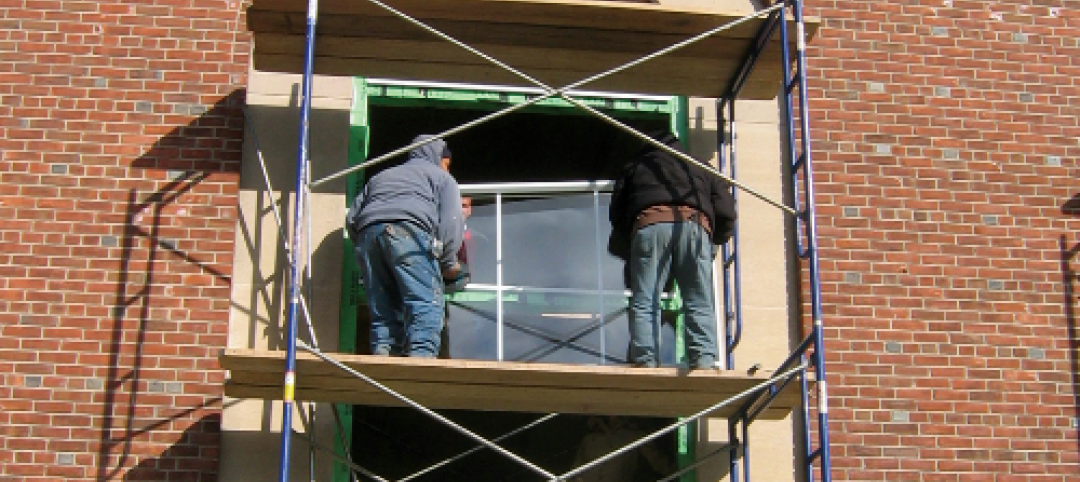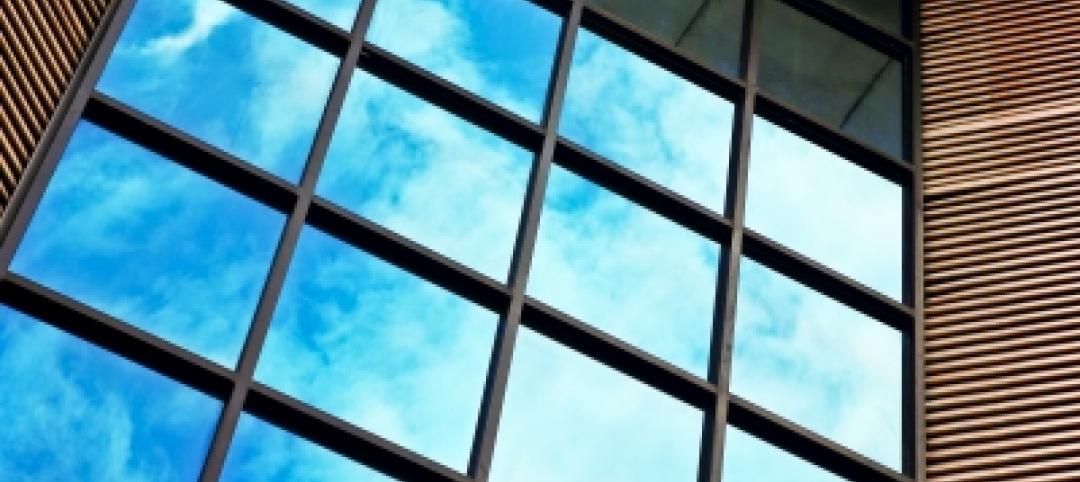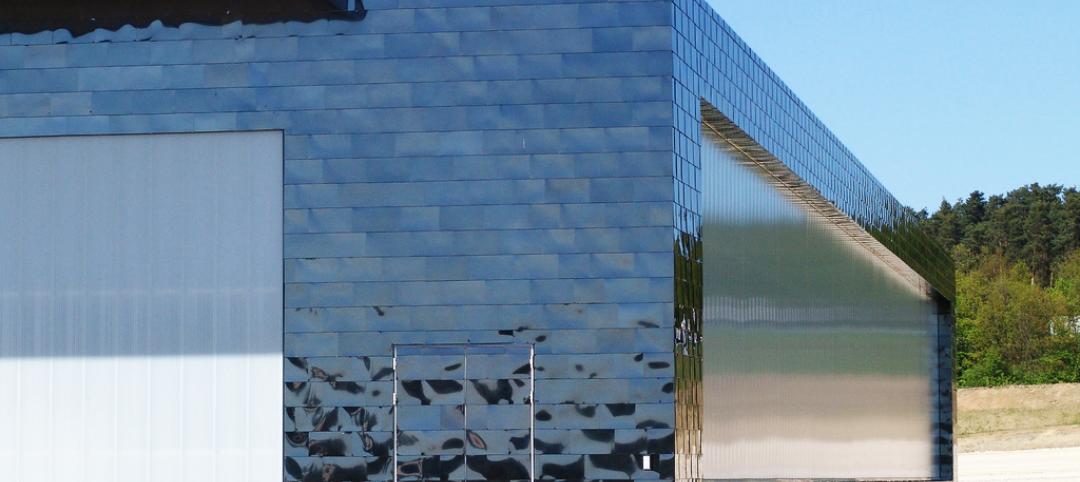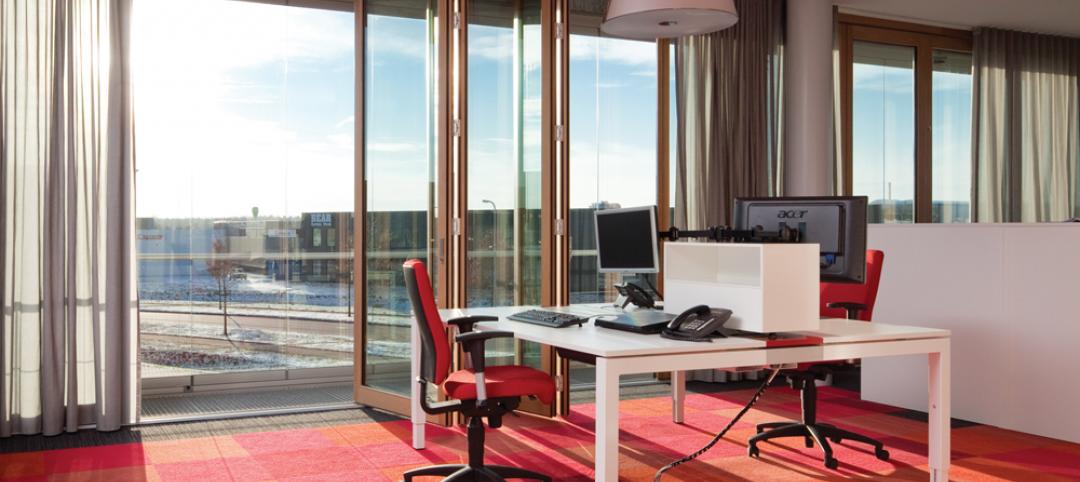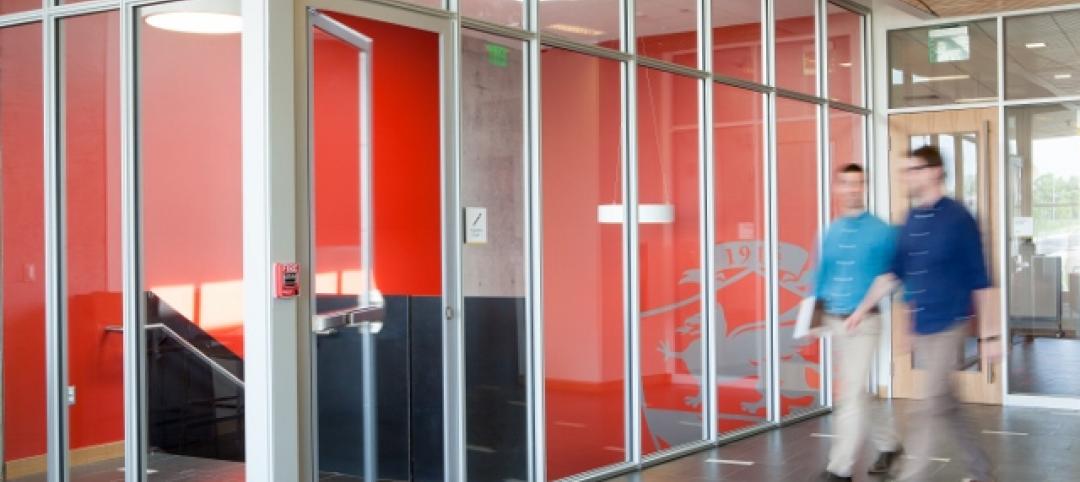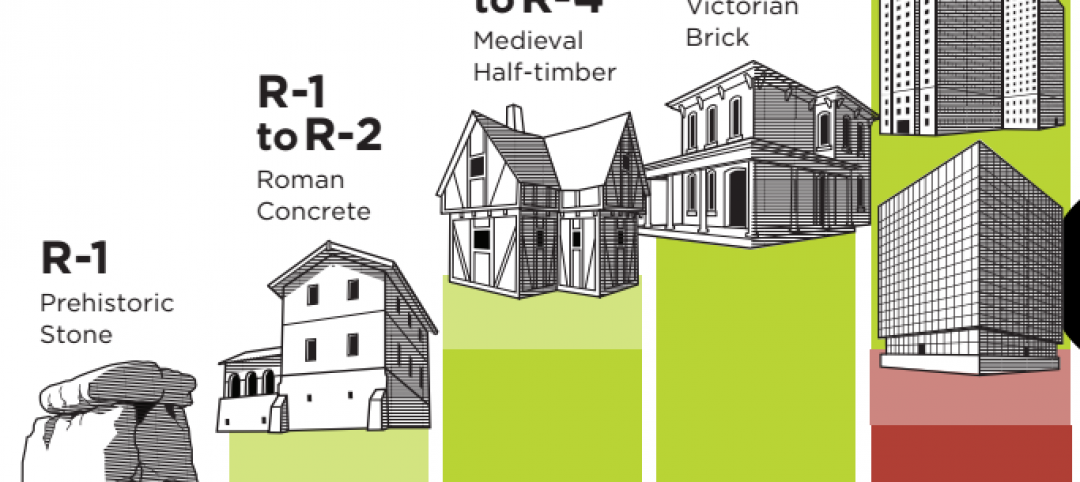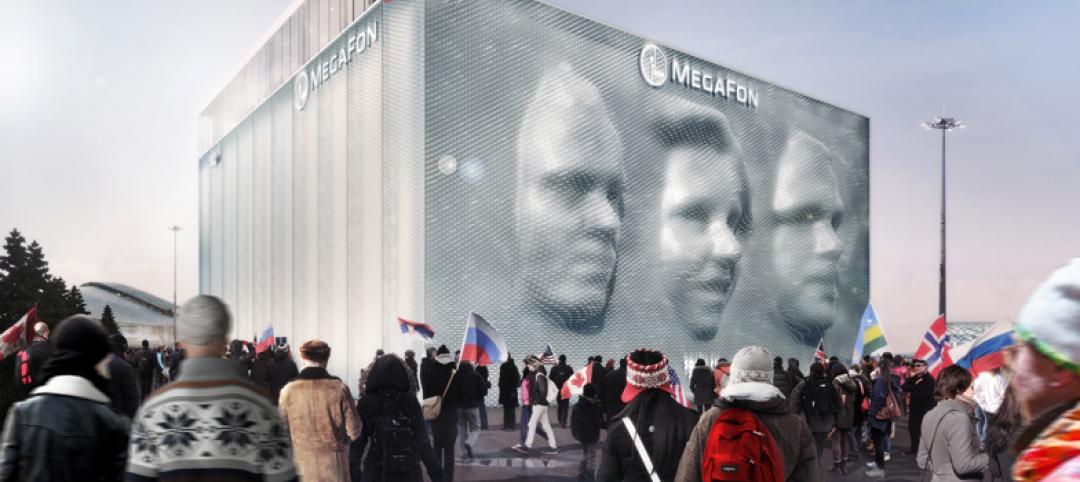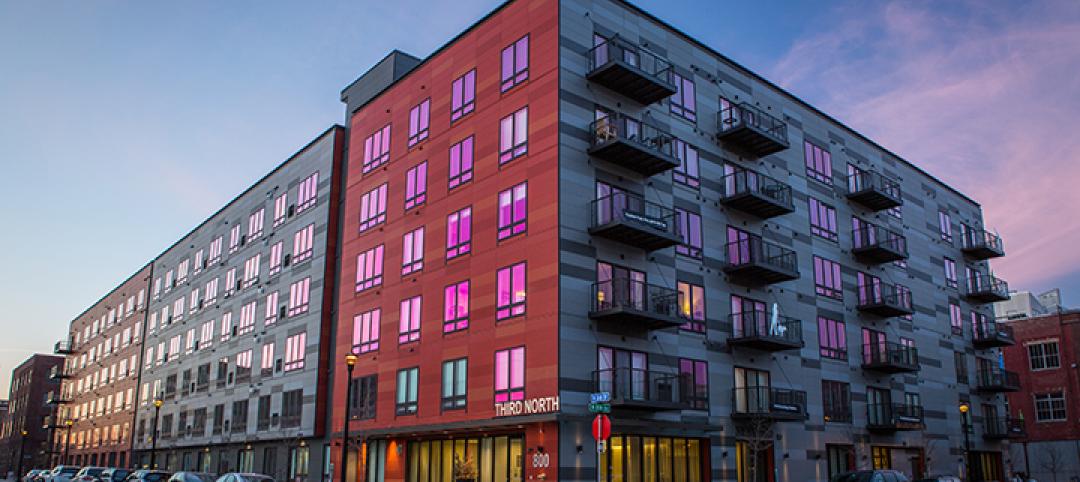As far as extreme environments go, Wisconsin has some of the most dramatic in North America. During the winter months, temperatures regularly dip well below freezing, and it is not uncommon to see conditions reach -10 degrees Fahrenheit without taking wind chill factors into account. In the summer months, however, the temperatures can reach up to 90 degrees Fahrenheit with significant humidity levels for extended periods of time.
Given these dramatic weather conditions, the materials chosen for the building envelope should not only protect building occupants from the elements, but ensure their comfort as well. With glass becoming the most popular infill for exterior curtain wall systems, it is no wonder that today’s glazing systems now consider air infiltration, water resistance, thermal properties, condensation resistance, structural performance, among others. In the case of Kromrey Middle School in Middleton, Wisconsin, they had to account for fire resistance as well.
Part of the additions and remodel at Kromrey Middle School included a dramatic, light-filled glass entrance almost 30-foot high that combined tranparent high performance low-e glass panels and opaque decorative panels in a clear anodized aluminum curtain wall frame. Because of the glazing structure’s proximity to the surrounding building, it was determined that the assembly had to meet ASTM E-119 for 60 minutes in order to meet fire rated code requirements. Aesthetics was also important, so the fire rated systems had to seamlessly match the non-rated systems on campus.
According to Matt Browne, the project manager from Lake City Glass, the challenge on this project was taking the profiles of a deeper, fire resistive aluminum curtain wall system and blending them seamlessly to a traditional aluminum curtain wall. SAFTI FIRST was the specified fire rated curtain wall supplier for this project, and our technical sales and engineering departments immediately went to work by providing the architects with the necessary details, performance data and structural calculations while coordinating the delivery and installation schedule with the glazing contractor. “SAFTI FIRST was able to take the approved low-e insulated units as well as the wood veneer panels and combine it with its fire resistive system, and then match it to all the other glazing on the project. It would take a well trained eye to even tell what was fire rated and what was not, and that truly was the ultimate goal of this portion of the project," says Matt.
To meet the code and design requirements, SAFTI FIRST provided SuperLite II-XL 60 with PPG Starphire Ultra-Clear insulated with Guardian SNX62-27 clear tempered for the transparent panels. For the opaque panels, SAFTI FIRST provided a custom fire resistive wood veneer panel insulated with a clear anodized panel on the interior side. For the framing SAFTI FIRST provided GPX Curtain Wall Framing with uniform sightlines and clear anodized finish. For the 60 minute pair doors with vision lites exceeding 100 square inches, SAFTI FIRST provided SuperLite II-XL 60 with PPG Starphire Ultra-Clear insulated with Guardian SNX62-27 clear tempered in GPX Builders Series Temperature Rise Door Framing. The entire fire resistive system was manufactured in the USA in SAFTI FIRST’s factory in Merced, California.
To ensure that the curtain wall requirements are met, SAFTI FIRST’s GPX Curtain Wall system has been tested to the following standards:
- ASTM E 283-04, Rate of Air Leakage Through Exterior Windows, Curtain Walls and Doors
- ASTM E 331-00, Standard Test Method for Metal Curtain Walls and Doors by Uniform Static Air Pressure Difference
- AAMA 501.1-05, Standard Test Method for Metal Curtain Walls and Doors by Uniform Dynamic Pressure
- ASTM E 330-2, Structural Performance of Exterior Windows, Curtain Walls, and Doors by Uniform Static Air Pressure Difference
- AAMA 501.4-09, Recommended Static Test Method for Evaluating Curtain Wall and Storefront Systems Subjects to Seismic and Wind Induced Interstory Drifts
- Thermal Cycling and Condensation Evaluation
- Interstory Vertical Displacement Tests
With regard to Wisconsin’s demanding weather conditions, the combination of SAFTI FIRST’s GPX Curtain Wall system and SuperLite II-XL IGU provide robust and durable performance serving as the perfect defense for freezing temperatures in the winter and intense heat and humidity in the summer. The GPX Curtain Wall system framing utilizes two distinct insulating barriers providing complete separation between the conditioned and unconditioned airspaces. The SuperLite II-XL IGU adds an airspace to the SuperLite II-XL, creating a “triple insulated” fire resistive glass. When teamed with a high performance, low-e product, SuperLite II-XL IGU offers a thermally efficient, fire resistive glass unit that will provide fire integrity and meet virtually any thermal requirement.
Being a school and having a set deadline for opening, meeting the schedule was also absolutely critical. “SAFTI FIRST worked diligently to make sure we could meet this schedule. I felt like they really proved their expertise with the system, as well as a first class professionalism that ensured the project would no doubt be a success,” adds Matt.
The result is a beautiful, high performance, code-compliant curtain wall that enhances the overall building’s design that ensures the safety and overall comfort of its occupants.
Project Information:
Project Name: Kromrey Middle School in Middleton, WI
Architect: Bray Architects
Glazing Contractor: Lake City Glass
Products Used: SuperLite II-XL 60 with PPG Starphire Ultra-Clear IGU with Guardian SNX62-27 and Custom Fire Resistive Wood Veneer Panels in GPX Curtain Wall Framing and GPX Builders Series Temperature Rise Pair Doors
Related Stories
Sponsored | | Nov 19, 2014
Fire resistive, blast-resistant glazing: Where security, safety, and transparency converge
Security, safety and transparency don’t have to be mutually exclusive thanks to new glazing technology designed to support blast and fire-resistant secure buildings. SPONSORED CONTENT
Sponsored | | Oct 29, 2014
What’s the difference between your building’s coating chalking and fading?
While the reasons for chalk and fade are different, both occurrences are something to watch for. SPONSORED CONTENT
| Oct 14, 2014
Proven 6-step approach to treating historic windows
This course provides step-by-step prescriptive advice to architects, engineers, and contractors on when it makes sense to repair or rehabilitate existing windows, and when they should advise their building owner clients to consider replacement.
| Oct 2, 2014
Effective use of building enclosure mock-ups within the commissioning process
Engineers from SSR offer advice and guidelines on implementing building enclosure mockups on any project.
Sponsored | | Sep 8, 2014
Metal roof and wall panels provide strong wind resistance
In areas that experience strong winds, metal roof and wall panels provide a sturdy, well-tested option for building envelope design.
| Sep 7, 2014
Building the cladding palette: panels, rainscreens, and veneers [AIA course]
When it comes to cost, performance, and aesthetics—not to mention maintenance and long-term resilience—the evaluation of cladding materials and façade systems is more complex than ever. This course is worth 1.0 AIA CES HSW learning units.
Sponsored | | Aug 16, 2014
Fire-rated framing system makes the grade at Johnson & Wales University Center
The precision engineering of TGP’s Fireframes Aluminum Series creates narrow profiles and crisp sightlines at Johnson & Wales University Center for Physician Assistant Studies
| Jul 17, 2014
A harmful trade-off many U.S. green buildings make
The Urban Green Council addresses a concern that many "green" buildings in the U.S. have: poor insulation.
| Jul 1, 2014
Sochi's 'kinetic façade' may steal the show at the Winter Olympics
The temporary pavilion for Russian telecom operator MegaFon will be wrapped with a massive digital "pin screen" that will morph into the shape of any face.
Sponsored | | Jun 4, 2014
Fiber cement panels bridge historic and modern at Minneapolis apartment complex
The design team for the Third North apartment complex specified Nichiha’s Illumination Series architectural panels in a blend of six colors—divided into swaths of reds and swaths of grays—that combine with a rectilinear shape to complement nearby brick.


